ISSN: 2511-7602
Journal for Art Market Studies
ISSN: 2511-7602
Journal for Art Market Studies
Julia Friedel / Vanessa von Gliszczynski
The question of how objects arrived in a museum has by now become an integral part of academic discussion. For several years, ethnological museums have also placed greater emphasis on the history of their collections and investigated the paths of their items. German museums face a two-fold challenge in this endeavour, since both the acquisitions during colonial times and those during the Nazi period need to be critically questioned. Sometimes these areas overlap, for example when objects from colonial regions were purchased under conditions of Nazi occupation. The complexity of the subject is illustrated by the wealth of current research projects, conferences and publications about provenance research in ethnological collections.
A critical reappraisal of the collection is also a major research focus at the Weltkulturen Museum in Frankfurt. Initial results will be presented in the exhibition entitled “Collected. Bought. Looted?”, due to open in the museum in August 2018. To emphasize the entanglement between the National Socialist era and the colonial period, the article will present case studies of acquisitions from both backgrounds.
The question of how objects arrived in museums has by now become an integral part of academic discussion.1 For several years, ethnological museums have also placed greater emphasis on the history of their collections and investigated the paths of their items. German museums face a two-fold challenge in this endeavour, since both the acquisitions during colonial times and those during the Nazi period need to be critically questioned. Sometimes these areas overlap, for example when objects from colonial regions were purchased under conditions of Nazi occupation. The complexity of the subject is illustrated by the wealth of current research projects,2 conferences3 and publications4 about provenance research in ethnological collections.
A critical reappraisal of the collection is also a major research focus at the Weltkulturen Museum5 in Frankfurt. Initial results will be presented in the exhibition entitled “Collected. Bought. Looted?”,6 due to open in the museum in August 2018. To emphasize the entanglement between the National Socialist era and the colonial period, case studies of acquisitions will be presented from both backgrounds. Even in 2004, when the museum celebrated its 100-year-anniversary, Hans Voges researched the history of the former Völkermuseum Frankfurt (Ethnological Museum) during National Socialism and published initial findings about the acquisition policy in the early 1940s.7 Based on his results, the forthcoming exhibition will focus on purchases from dealers during the occupation as well as holdings in the collection which were acquired in a colonial context. A detailed investigation presents a particular challenge, since the museum building as well as the documentation of the collection were destroyed by bombing in March 1944. While individual documents such as invoices or letters are sometimes preserved in the city archives, the documentation is far from complete.
Based on the authors’ current state of research, this article will initially deal with purchases from dealers in Nazi-occupied areas, including the acquisition of ethnographical collections from Jewish owners. Subsequently, two case studies from a colonial context will be presented. While these latter objects did not come to the museum through the European trade, their acquisition history is comparable to the biographies of objects circulating on the art market in the early twentieth century. To date, no objects have been identified in the collection of the Weltkulturen Museum that would illustrate an unbroken provenance from the country of origin via the European art trade to the museum collection. It is all the more important to gain comparable insights into collecting practices in a similar time frame through equivalent acquisition histories.
The majority of objects purchased between 1933 and 1945 by what was then the Völkermuseum Frankfurt was acquired from the European art trade, typically in German-occupied areas during the early 1940s. Art dealers in Paris and Amsterdam played a central role, since the view in Frankfurt was that occupied countries offered particularly favourable conditions for acquisitions. How these objects had come into the trade is known in only a few rare cases.
As a matter of fact, shortly after the beginning of the German occupation of the Netherlands (May 1940) and France (June 1940), two representatives of the Völkermuseum Frankfurt travelled to Paris. Having made a large number of purchases there in late 1940 and reserved others, the Völkermuseum Frankfurt received special funds amounting to 30,000 Reichsmark in 1941 in order to enhance the collection through acquisitions. The mayor of Frankfurt, Dr Friedrich Krebs, justified the expense by stating that “there .. [in Paris] were still excellent opportunities for desirable acquisitions for the Völkermuseum Frankfurt at very advantageous prices”.8 He continues to say that objects should also be bought in Brussels and Amsterdam, since, for example, in Amsterdam there were “... objects from the West Indies and Indonesia that [could] be bought cheaply. Even if no concrete predictions can be made for these two locations, it is nevertheless to be expected that inexpensive complementary acquisitions for the Völkermuseum can be made in Belgium and Holland [...]”.9 Clearly, the expectations were warranted, since the Frankfurt Museum was able to buy a total of 1,168 objects in occupied France, the Netherlands and Belgium, according to Hans Voges’s findings.10
Regarding the occupation, the question immediately arises why it was possible to buy so inexpensively during the early 1940s in France, Belgium and the Netherlands, respectively why in Frankfurt the situation was considered to be such an opportunity. From today’s perspective, it can often be difficult to assess whether objects were traded below current market prices, and this is especially true for non-European applied arts. Taking into consideration the art market in general, however, it must be said that market prices during the German occupation did not necessarily fall.11 On the contrary: a study of the price development for paintings during the occupation of the Netherlands came to the conclusion that prices in the art trade began to increase slowly from 1940 and then grew exponentially from mid-1941 onwards.12 An assessment of whether the museum purchases were noticeably inexpensive is nevertheless difficult. However, the correspondence of museum employees and members of the city administration keeps referring to an “advantageous” opportunity. The favourable exchange rate set by the National Socialists must have certainly played a part.13 In addition, the German-occupied regions offered a wide range of objects for German museums, which also benefited the Frankfurt museum. French, Belgian and Netherlandish art dealer firms offered applied arts from the colonies brought back by colonial administrators, missionaries, researchers and private travellers. Sadly, there are no reliable figures available as to how many objects entered the circulation of the art trade as a consequence of flight and expulsion. Nevertheless, the following example of Baron Maurice de Rothschild suggests that Jewish citizens also sold such collections in connection with their escape.
Since 1943, several objects from the former East African collection of Baron Maurice de Rothschild have been part of the Frankfurt museum collection, in particular everyday objects such as headrests, vessels or spoons. From 1904 to 1905 Maurice de Rothschild, a French Jew, visited Ethiopia, Kenia and Uganda, as well as other countries in Africa, and undertook zoological studies. The results of his research were published by the Muséum national d’Histoire naturelle in Paris,14 but without any reference to his collecting activities – consequently we have no information about whether or how he acquired the objects in situ. In any case, the then Völkermuseum in Frankfurt purchased a total of 572 objects from this collection15 via the art dealer Charles Ratton in Paris.16 The figure could only be derived from the registered inventory numbers, since the documentation relating to the purchase was mostly destroyed.17 A letter by the curator at the time, Adolf Jensen, to the Frankfurt mayor Krebs mentions the approval of the purchase in 1942 for a sum of 140,000 francs.18 During the bombing of the museum in World War II however, the majority of these objects was destroyed; today around fifty objects from the collection of Maurice de Rothschild remain in the museum’s storage.
In June 1940, during the German army’s advance westwards which would ultimately lead to the occupation of France, Maurice de Rothschild fled to Portugal. He received an exit visa from the Portuguese diplomat Aristides de Sousa Mendes in Bordeaux and sailed from Lisbon to Scotland as early as in July 1940.19 The National Socialists confiscated a large part of his extensive collection of art and cultural objects and transported it to Germany.20 As far as the collection from East Africa is concerned, the situation is less clear and poses the question at which point de Rothschild passed his collection to the dealer Ratton. It seems evident that Maurice de Rothschild would not have sold his collection, had the Nazis not invaded France.
After the war, individual objects from the Rothschild collection were also newly inventoried in Frankfurt as “earlier inventory” (alter Bestand), for example a game board (fig. 1). At the same time, the old inventory number was marked in the files as a war loss. Since many pieces from the collection had been moved to rural areas for fear of destruction, while significant new acquisitions were made during the 1940s, regaining a complete overview of the collection after the war was probably a challenge. Was it therefore simply an error that these objects were not attributed to their original owner? This is a relevant question, since the United States military government had introduced so-called Central Collecting Points (CCP) in Germany and required all museums to return art and other objects acquired in German-occupied countries. The Völkermuseum Frankfurt was prompted to do so, as were other institutions in the city.21 Nevertheless, it seems that not every purchase made during the time of the occupation was passed to the CCP in Wiesbaden. A list has been preserved where the museum recorded only 37 objects that were returned. Objects from the Rothschild collection were not included.22 However, a letter from the curator Adolf Jensen to the US military government states that further returns were planned as soon as a better overview of the preserved collection had been gained.23 It seems that it did not come to that before the CCP in Wiesbaden closed down its activities by mid-1951.24 As far as the Rothschild collection is concerned, a note is however recorded on the list of returns of March 1947, which also explains why this collection was not returned: “Objects were destroyed by fire during the attack on 22 November 1944 in the museum building, Gr. Eschenheimer-str. 26 room 38, cupboard no. 2. Cf. War Damage Claim by the department.”25 It will be impossible to determine with certainty whether the circa fifty objects still preserved in the museum’s collection today may have been deliberately declared to have been destroyed.
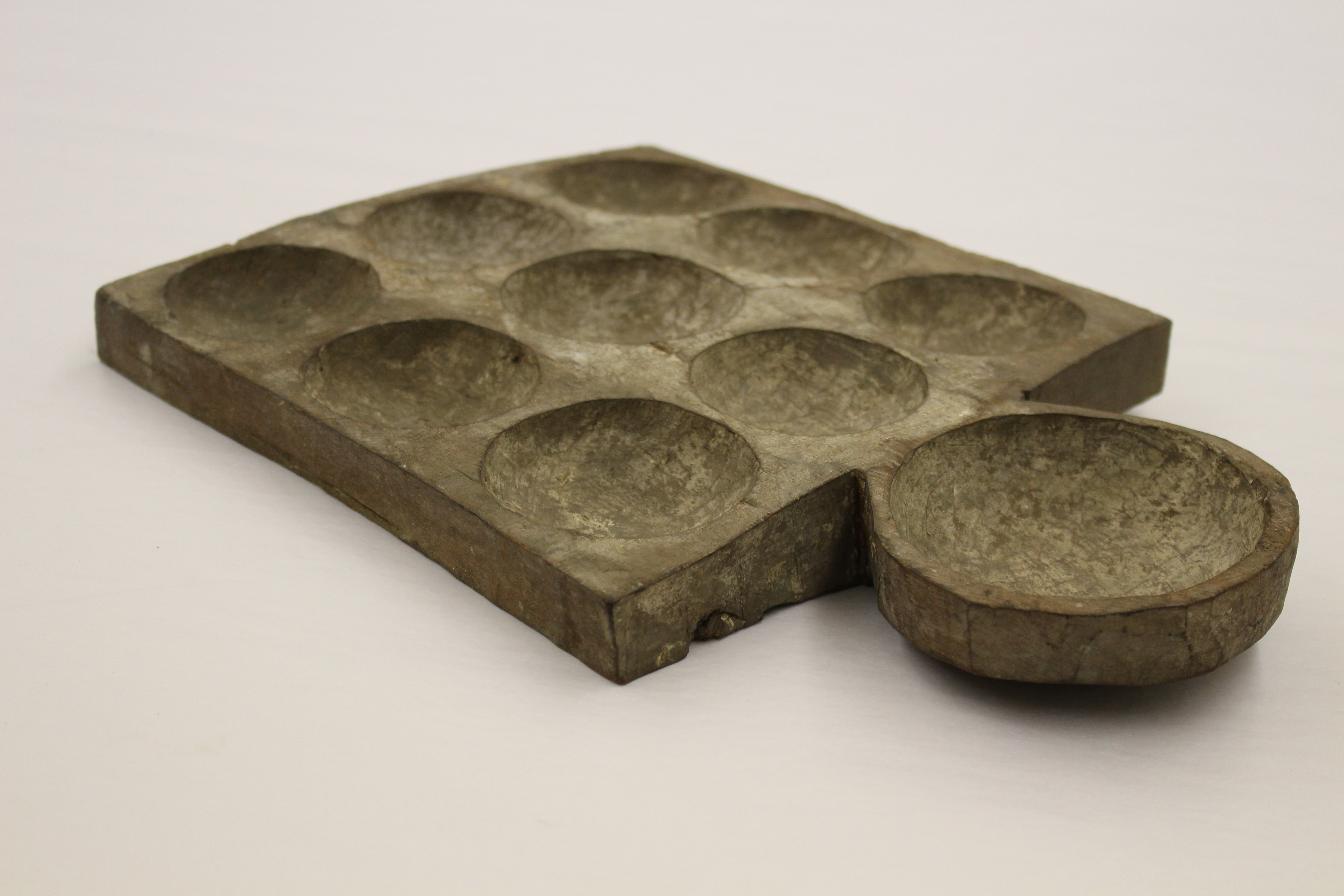
Fig. 1: Games Board, ethnic group unknown, East Africa; probably collected by Baron Maurice de Rothschild, 1904-1905. Purchased from Charles Ratton, Paris, 1943.
Weltkulturen Museum, Frankfurt am Main (N.S. 34164), photo: Wolfgang Günzel, 2018.
The example of Maurice de Rothschild already points to the central role art dealers played as the link between Europe and the colonies. As a documented purchase history seems not to have been of interest to either collectors or dealers, cases of a documented path of an object towards the trade are few and far between. This also applies to Galerie Aalderink in Amsterdam, where the Völkermuseum Frankfurt bought a total of 198 objects in April 1941, invoiced at a total sum of 5,291 Dutch guilders. The invoiced amount is however lower than that on a list of “assets which were brought to Germany from regions formerly occupied by German troops, compiled after the war”26, where an even higher value is recorded at 6,616 guilders. Due to the circumstances of the occupation, the colonial purchase history of the objects bought at Aalderink’s is as uncertain as a possible provenance from Jewish collections and whether the pieces were sold under pressure. Research has not led to results so far. The majority of the purchased objects came from what is today Indonesia, a Dutch colony until 1945. Furthermore, there were objects from Oceania as well as Africa and the Americas. Everyday objects were included as well as sacral or ceremonial objects. The question how the gallery owner Jacques Aalderink sourced his wares on the European art market is as relevant in this context as the question under which circumstances these objects left their region of origin.
Even though one can hardly speak of a balanced relationship between a collector and local ethnic groups in a colonial context, everyday objects such as baskets or bamboo vessels typically came to Europe through exchange or sale. With sacral objects, the situation is often less clear-cut. The Dutch researcher Jos van Beurden has developed a typology of five kinds of acquisition in a colonial context: firstly, colonial administrators received presents from local authorities or local people. Secondly, objects were acquired during private or academic research expeditions. A third category is presented by acquisition during military punitive expeditions. Finally, there are collections by missionaries and “archives”, that is historical documents and written exchanges.27 While the last category is less relevant in our context, the first four offer a helpful structure for an initial assessment of the objects bought from Aalderink and consider potential scenarios of acquisition.
For example, an ancestor’s figure from Nias with a height of almost 140 cm formed part of the April 1941 purchase (fig. 2), with a listed value of 250 guilders. The small island off the north west coast of Sumatra had been the object of missionary activities since the middle of the nineteenth century. The missionary work led to voluntary handovers of ancestral figures as well as to confiscation or destruction of these and other sacral objects. Depending on the missionary society, the missionary’s character and the area of activities, local culture was approached in different ways. It is however indisputable that the majority of ancestral figures from Nias came to Europe via missionary societies.28
In 1941, the Frankfurt museum also bought five objects from the former sultanate Aceh at the northern tip of Sumatra at Aalderink’s. These are two shields, a hat, a toiletry set and a basket. Galerie Aalderink had probably bought these from the European trade. Even though the acquisition in Aceh cannot be reconstructed as such, it is instructive to look at the history of the region to gain a sense of context. Since the middle of the nineteenth century, the Dutch colonial government had systematically tried to establish “peace” in the colony, which also implied military operations. Aceh played a central role, since in this region the colonial government waged what was probably their most tortuous war against the local population. In 1873 the Netherlands officially declared war, which only ended in 1903 with the submission of the sultanate. Nevertheless, uprisings continued until the beginning of World War II.29 Against this background, we must ask whether the objects may have left Aceh in the context of military conflict, especially with regard to the shields. The provenance of the magnificent hat (fig. 3) could also be connected to the overthrowing of the sultanate, as these were traditionally worn only by sultans, noblemen and priests.30
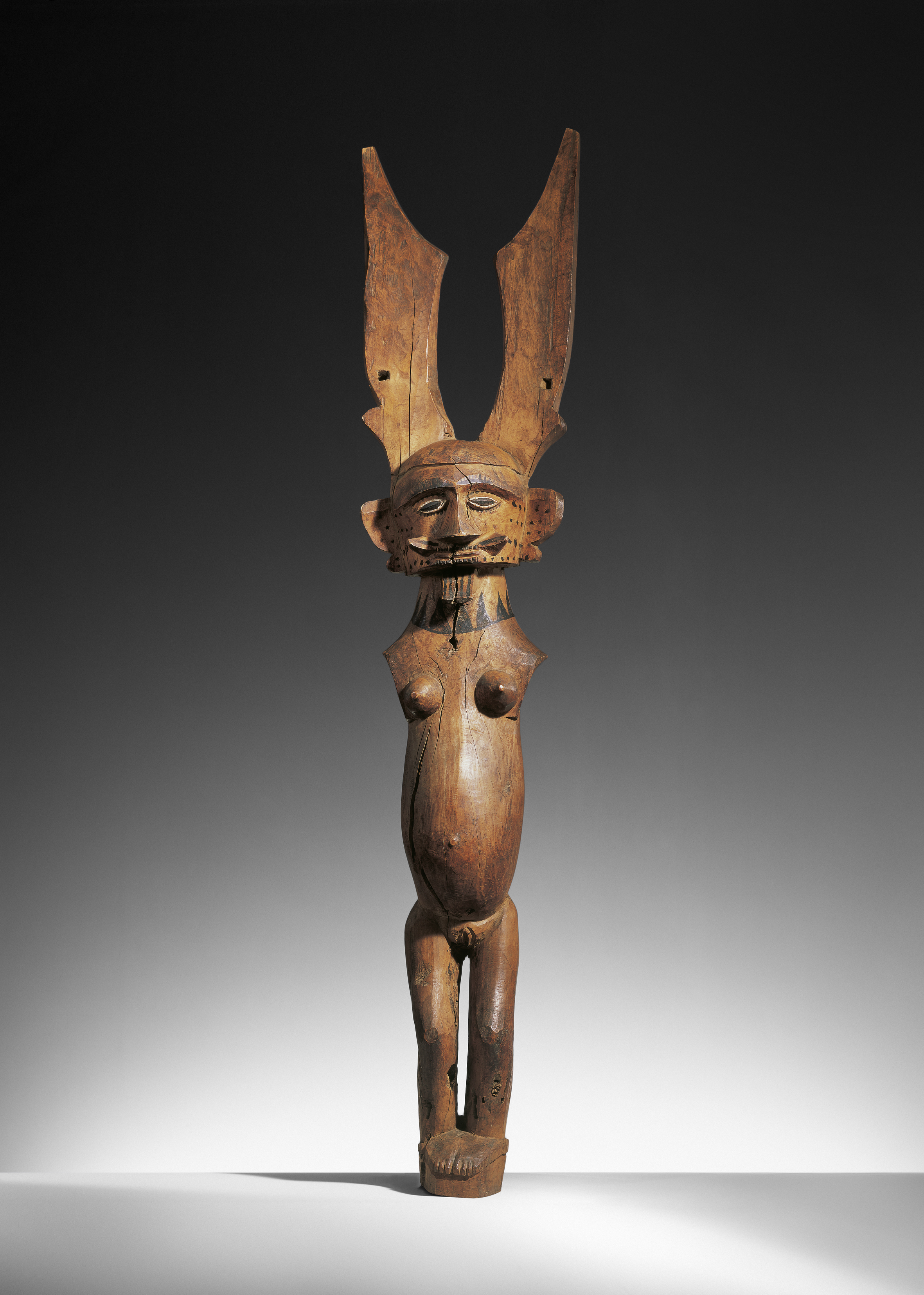
Fig. 2: Ancestor’s figure (adu hörö). Niha, Nias, Indonesien Purchased from the dealer Aalderink, Amsterdam, April 1941
Weltkulturen Museum, Frankfurt am Main (N.S. 33565) photo: Wolfgang Günzel, 2018.
The examples listed above demonstrate the importance of researching the context of acquisition for objects which entered the collection of the Frankfurt museum during the National Socialist period. The example from Aalderink also illustrates the importance of having as much detailed information as possible about the history of an object or a collection from an ethnological perspective. However, the path taken by ethnographical objects towards the art trade is hardly ever documented. Only rarely did early twentieth-century dealers acquire objects directly in the countries of origin. When purchasing them from the European trade themselves, they often received only scant information about regional origin and usage.31 Historical archives are a possible source, if the galleries still exist. In the case of Maurice de Rothschild, however, no information has been found to date about the acquisition of the objects in East Africa.32 In the case of Galerie Aalderink, direct contact with the current management of the firm could not be established.33 But even if the history of these objects cannot be traced down to the last detail, comparative examples permit deductions about the type of acquisition in a colonial context. A common timeframe and historical background, as well as Jos van Beurden’s typology form a useful basis for transferring observations which are applicable to the European art trade. Two representative cases from the collection of the Weltkulturen Museum will be examined below, which illustrate the acquisition of objects in colonial era South Africa, respectively Indonesia. The first example from South Africa corresponds to van Beurden’s typology of the “punitive expedition”, which already characterized the shields and the hat from Aceh in Indonesia. A second example is presented as a result of the Sunda Expedition to the Malayan archipelago led by Johannes Elbert, where sacral objects were acquired, among others. At the same time, the example illustrates the significance of private and academic travel in colonial circumstances. Even if these actual objects did not enter the European art trade, they provide an opportunity of orientation and contextualisation for other objects from a colonial background sold by European art dealers.
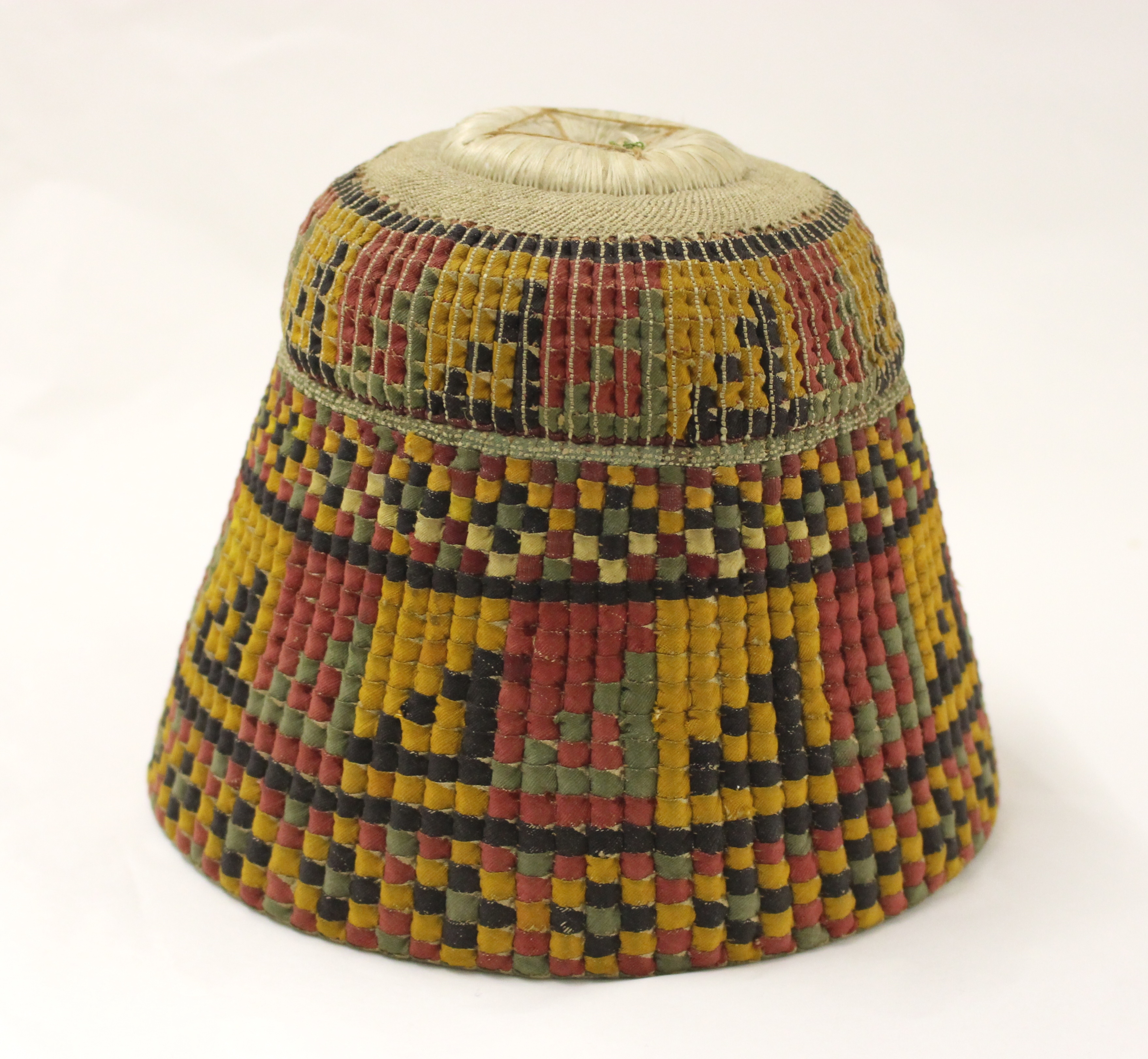
Fig. 3: Hat (meukeutob), Aceh, Northern Sumatra, Indonesia. Purchased from dealer Aalderink, Amsterdam, April 1941.
Weltkulturen Museum, Frankfurt am Main (N.S. 33512), photo: Weltkulturen Museum, 2018.
During research in the African department of the museum a belt from South Africa was identified which an old label marked as a “War Belt from an insurgent Gaika kaffir, from the Kaffir War 1878” (fig. 4). The war belt had been brought to Germany by Carl Immanuel Müller: born in Mannheim, he had emigrated to South Africa in 1876.34 He went to the colony of British Kaffraria, which was the setting for several border wars between Xhosa, Khoikhoi, the British and the Boers.35 Although the region was under administrative control of the British military, German legions also took part in the armed conflict with the local population. Responding to a call from lieutenant colonel Friedrich Schermbrucker, Müller took charge of the Stutterheim Foot Police.36 We may assume that Müller acquired the war belt during the ninth border war which took place from 1877 to 1879. During this conflict, the Ngqika (“Gaika”) were involved under Mgolombane Sandile, as they defended the neighbouring group of the Gcaleka against the British military of the Cape colony.37 In his diary, Müller describes how he fatally shot two adversaries in March 1878 during a skirmish. Several weeks later, he rode past the same spot in the company of Schermbrucker, where the two corpses still lay.38 Did he perhaps take the belt on that occasion?
A further aspect adds particular interest to the object: the metal tube attached to the belt contains a pass of the former owner (fig. 5). It records, among other information, the man’s age and height. There is also a name, Colani, which however does not match the name given in the museum database. There, the name is given as Ncalu Maxiti. It remains to be explained how the discrepancy arose. Could it be that Müller brought back two war belts from fallen natives, which were later confused – perhaps even from the two men he shot dead in March 1878?
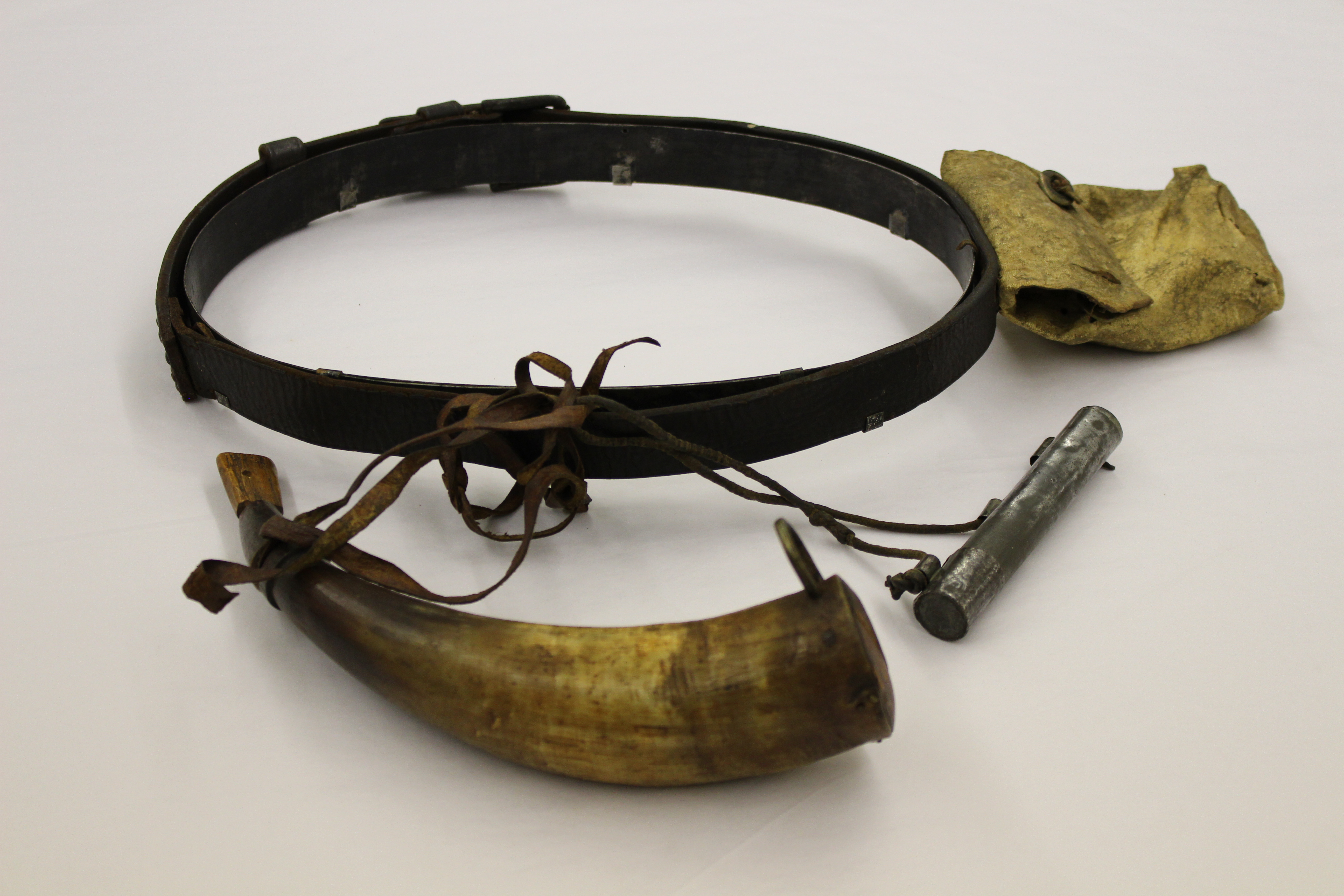
Fig. 4: War Belt, Ngqika, South Africa; collected by Carl Immanuel Müller and Hans Eduard Müller, circa 1878
Weltkulturen Museum, Frankfurt am Main (N.S. E0753a), photo: Wolfgang Günzel, 2018
While the war belt is not an object that circulated in the art trade, it can illustrate the problematic biographies of weapons and their accessories which were sold by art dealers to museums as a consequence of armed conflict.39 The African collection of the Weltkulturen Museum alone contains circa 2,800 weapons, including purchases from dealers such as William Ockelford Oldman,40 Julius Konietzko41 or J.F.G. Umlauff,42 who counted many ethnological museums among their clients in the first half of the twentieth century. There are also other objects annotated as coming from “fallen Kaffirs from the war in 1878” with a Müller provenance in the collection of the Weltkulturen Museum today. How should these objects be handled? While there were no international agreements in place designed to prevent plunder at the time, there can be no question of a legal acquisition in these instances. After all, the historical context, the violent appropriation of land and the increasing oppression of native people all contribute to a disconcerting impression for today’s viewer of such objects.
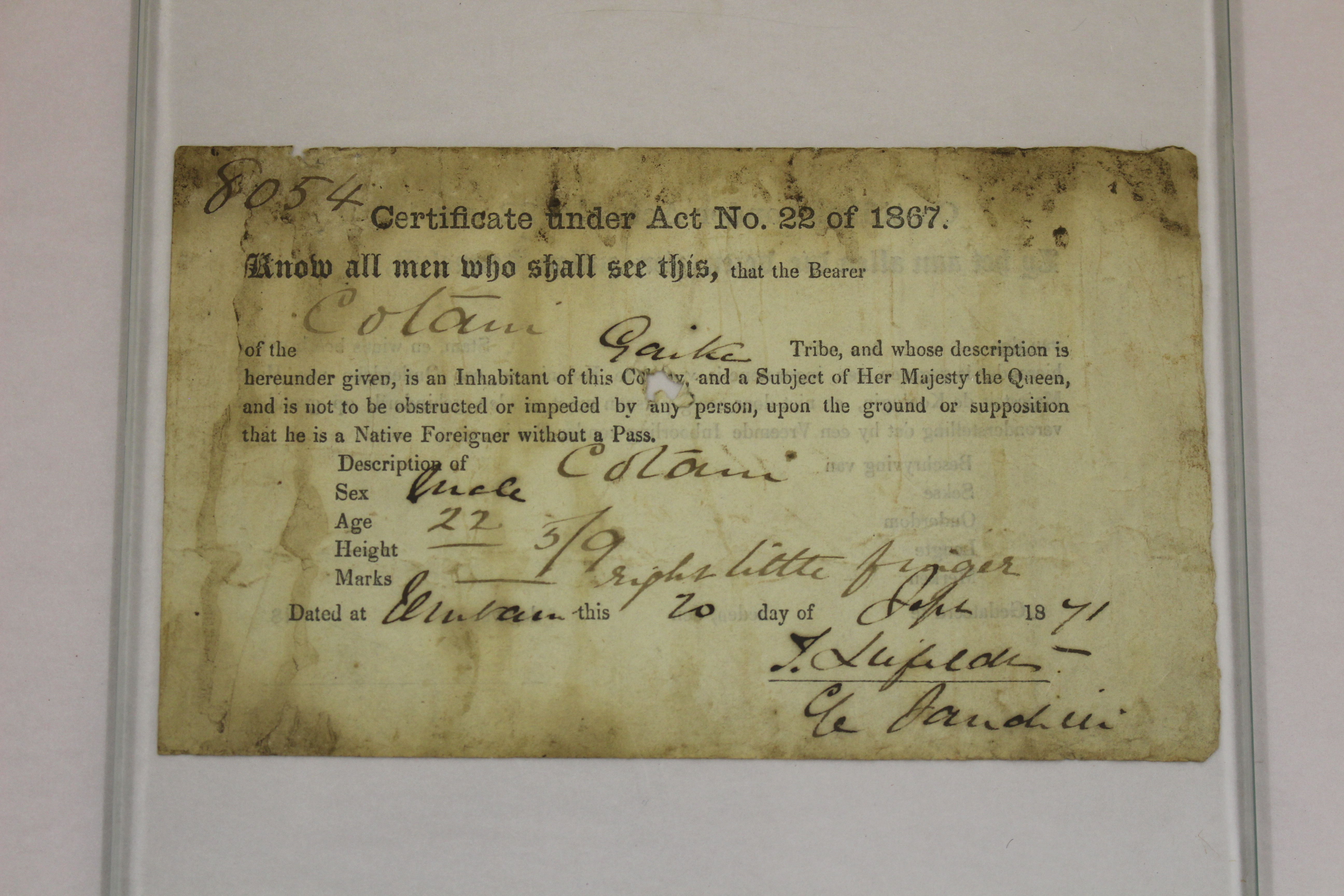
Fig. 5: Pass document, Ngqika, South Africa. Collected by Carl Immanuel Müller und Hans Eduard Müller, circa 1878.
Weltkulturen Museum, Frankfurt am Main (N.S. E0753c), photo: Wolfgang Günzel, 2018
In contrast to private collections from the colonial era, the acquisition context for objects collected during research expeditions is usually better documented. This is certainly the case for the Frankfurt Sunda expedition, which brought the geographer Johannes Elbert to present Indonesia from 1909 to 1910. Even though the circa 1,200 objects that were accumulated did not enter the art trade but were directly passed to what was then the Völkermuseum in Frankfurt, Elbert’s research report in two volumes43 provides a good example of collecting in colonial circumstances. It is rare to find such a precise description of individual collecting activities in research reports from the nineteenth and early twentieth century, which makes this report exemplary for the acquisition of objects in a colonial framework. This article will summarise the general context of the research expedition and outline a specific example of the acquisition of a sacral object. As already demonstrated by Jos van Beurden’s typology, objects acquired during colonial times must be regarded with an especially critical eye, be it in the art trade or in museums, even if they were nominally purchased.44
The objective of the Sunda expedition was the collection of botanical, zoological, geological, geographical and ethnographical data, respectively objects. At the time of the expedition, the Malayan archipelago had been under colonial rule as “Dutch East India” for circa 300 years. From the mid-nineteenth century onwards, the colonial government attempted to “pacify” the kingdoms, which were either allied or resisting, by military means. As a German researcher travelling through a Dutch colony, Johannes Elbert was dependent on the support of the colonial offices. He was also able to use the colonial rulers’ administrative infrastructure and often received military escorts. The joint appearance of the research expedition with representatives of the colonial government led to them being almost perceived as an entity, thus significantly influencing the impression the native population received of Elbert as a collector.
His collecting activities were consequently conducted in a relationship characterised by a distinct power gap between the collector and the native population. Furthermore, Elbert and his assistant Carl Gründler showed little respect for the interests and rules of the cultural communities they encountered. While collected items may not have been simply removed or stolen from the local population, from today’s perspective the acquisition context takes on negative connotations. Elbert actually acquired the collected objects in exchange for money or goods which were popular with the locals. He summoned all interested parties outside his tent camp to “go shopping”. Such a market situation was described by Elbert during his trip through the Rea region on the island of Flores, for example. It is especially pertinent since on this occasion Elbert was able to purchase a sacral object “by chance”, which was the bag of a “magician priest with all his remedies and magic treatments” (fig. 6). Elbert described how he had “suddenly” grabbed it and had “handed the man the payment quickly with a few friendly words”. He continued: “The owner was so startled that he could not respond and almost collapsed in front of me, as I had indeed taken away the all-powerful magic bag from the holy man.” When Elbert then began to unpack the bag and asked for the significance of the magical treatments, the owner froze and answered, “turning a shade paler”, that this sacred stone had fallen from the sky. Elbert ended the story as follows: “The moment he saw this stone disappear into my pocket, he hastily and fearfully tried to grab it. I immediately pulled my hand back out and handed him a large coin. In the end the gentleman acquiesced in the purchase, but every time I pulled out another holy object, he tried to take it from me.”45
The research report of the Sunda expedition frequently lists examples of this type, where Elbert clearly benefited from his position as a European as well as from the military escort provided by the colonial rulers. Among other descriptions, Elbert himself stated that the local population did not want to reveal any information about their religious life for fear of the soldiers.46 While it is possible to refer to the acquisition as a “purchase”, buyer and seller were not on an equal footing. From an ethnological perspective the acquisition poses ethical questions,47 also considering the historical context. The example also demonstrates that sacral objects which came to Europe through research expeditions or the art trade must be considered particularly critically.
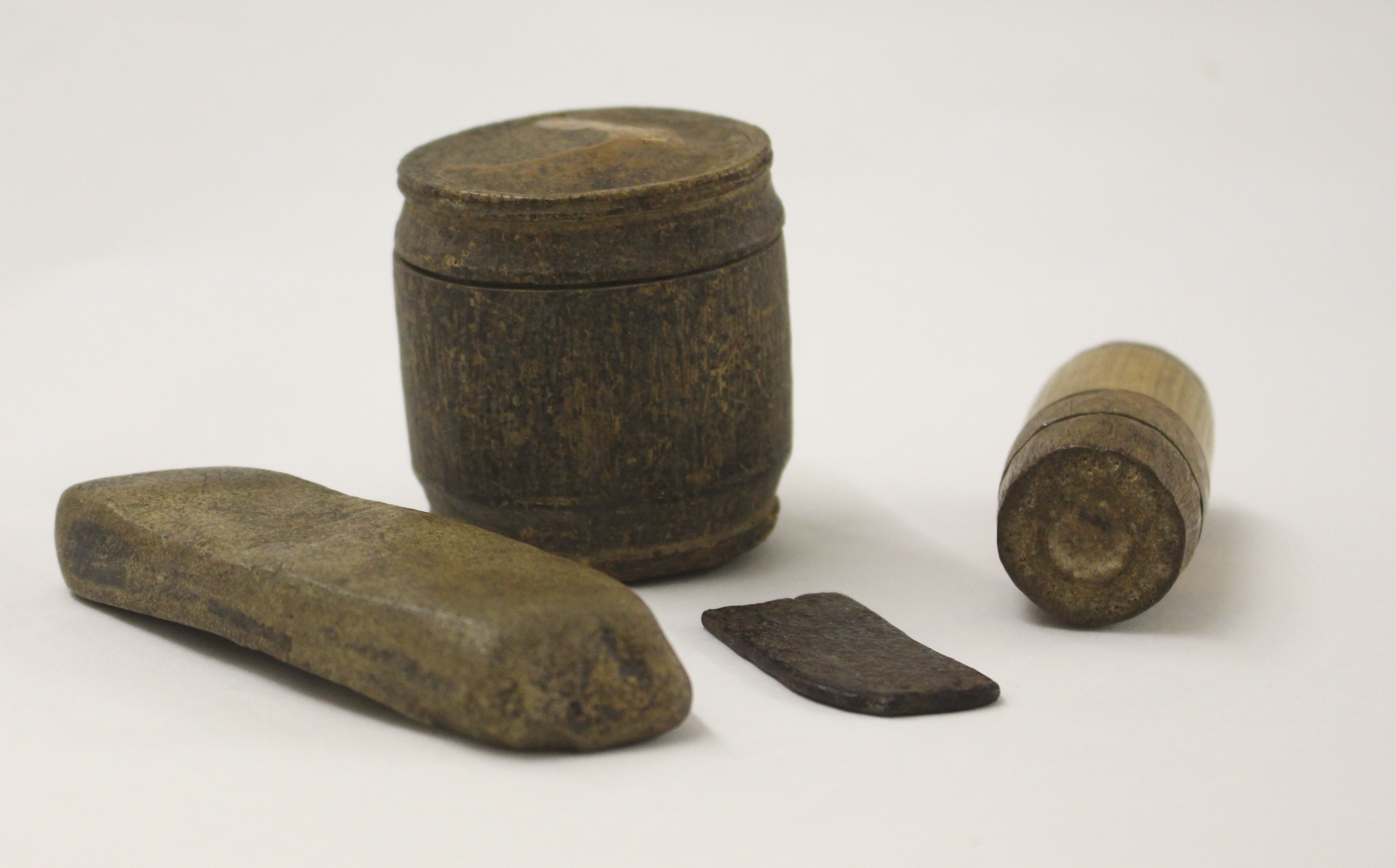
Fig. 6: Containers and paraphernalia from the bag of a “magician priest”, Pau Mere Wawo, Rea, Central Flores, Indonesia; collected by Johannes Elbert, Frankfurt Sunda expedition, 1909-1910
Weltkulturen Museum, Frankfurt am Main (N.S. 15139, N.S. 15140, N.S. 15141 und N.S. 15145)
photo: Wolfgang Günzel, 2018
The above-mentioned examples provide a brief insight into the variety and the challenges of provenance research in ethnographical collections. Of particular interest is the relationship between museums and the art trade, where the latter functions as a connecting link between colonial regions and the European museumscape. The path taken by ethnographical objects from their place of origin via a collector to the trade or directly into a museum was not only characterized by a permanent translocation. In the course of their changes in ownership, the objects were also constantly reassessed and revisited; at the same time each station could often imply a loss of important knowledge about an object.48 Changes in ownership also mean a loss of information about the circumstances of acquisition. Clearly, the acquisition history was not regarded as an important part of the documentation by collectors and dealers. Reconstructing acquisition circumstances is therefore a great challenge for provenance research, which frequently exposes large gaps. Yet comparing different object biographies is helpful insofar as a large number of case studies can lead to a more comprehensive understanding of a historical acquisition context.
Nevertheless, of course each individual object needs to be regarded as a singular case. The research process is lengthy and requires multiple angles of expert knowledge, from an understanding of the art trade under the Nazis to specific local expertise about colonial history. The colonial context poses questions about the ethics of collecting in particular, which are relevant when regarding the objects. The colonial worldview of the past often fostered a collecting behaviour which would be considered unethical today but was not questioned or thought illegitimate at the time. Even in cooperation with different actors and institutions in the countries of origin,49 many questions about the provenance of these objects remain unanswered. Nevertheless, these encourage further research and a critical reflection about the path the objects followed on their way into a museum.
Julia Friedel is curator of the African department at the Weltkulturen Museum in Frankfurt. Vanessa von Gliszczynski is curator of the South East Asian department at the Weltkulturen Museum in Frankfurt.
Translation: Susanne Meyer-Abich
1 See for example the discussion about the Humboldt-Forum in Berlin, respectively about how to deal with looted art in German museums, e.g. https://www.tagesspiegel.de/kultur/das-humboldt-forum-und-das-koloniale-erbe-berliner-anthropologin-fordert-mehr-aufklaerung/20161556.html (accessed on 28 February 2018); or http://www.sueddeutsche.de/muenchen/bayerische-staatsgemaeldesammlungen-ns-raubkunst-das-museum-mauert-1.3051720 (accessed on 5 March 2018).
2 See https://www.kolonialismus.uni-hamburg.de/koloniale-spuren-im-uebersee-museum-bremen-afrika-sammlungen-als-gegenstand-der-provenienzforschung/ (accessed on 2 March 2018).
3 See https://www.lindenmuseum.de/ueber-uns/forschung-und-netzwerk/ (accessed on 11 December 2017); or http://www.museum-fuenf-kontinente.de/veranstaltungen/programm%C3%BCberblick/07.-april-2017-tagung-provenienzforschung.html (accessed on 6 December 2017).
4 See for example Anna-Maria Brandstetter and Vera Hierholzer, eds., Nicht nur Raubkunst! Sensible Dinge in Museen und universitären Sammlungen (Göttingen: Mainz University Press, V&R unipress, 2018).
5 From 1904 until the 1960s today’s Weltkulturen Museum was known as the “Städtisches Völkermuseum”.
6 The exhibition (16 August 2018 – 27 January 2019) is part of a wider cooperation project with the Historisches Museum Frankfurt (HMF), the Museum Angewandte Kunst, the Museum Judengasse and the Fritz-Bauer-Institut.
7 Hans Voges, Frankfurter Völkerkunde im Nationalsozialismus, 1933-1945, in Museum der Weltkulturen, Ansichtssachen. Ein Lesebuch zu Museum und Ethnologie in Frankfurt am Main (Frankfurt am Main: Societätsverlag, 2004), 130-149.
8 Entwurf zu einer Vorlage des Oberbürgermeisters an die Gemeinderäte über die Bewilligung einer außerplanmäßigen Ausgabe im Haushalt des Kulturamts (Völkermuseum), März 1941. Institut für Stadtgeschichte Frankfurt am Main, signature 8.085, Magistratsakte.
9 Ibid., Institut für Stadtgeschichte Frankfurt am Main, signature 8.085, Magistratsakte.
10 Hans Voges, Frankfurter Völkerkunde im Nationalsozialismus, 1933-1945, 137.
11 With the beginning of World War II the turnover of the Amsterdam dealer Carel van Lier increased, reaching a peak of 37,500 guilders in 1941. Cf. Bas C. van Lier, Carel van Lier. Kunsthandelaar, wegbereider 1897 – 1945 (Bussum: Uitgeverij Thoth, 2003), 129.
12 Jeroen Euwe and Kim Oosterlinck, Art Price Economics in the Netherlands during World War II, in Journal for Art Market Studies, 1/1 (2017), 47-67.
13 Cf. the development of currency exchange rates compiled by the Federal German Bank for France (page 2-3) and the Netherlands (page 12-13). https://www.preussischer-kulturbesitz.de/fileadmin/user_upload/documents/mediathek/schwerpunkte/provenienz_eigentum/rp/151005_SV-Web_AnlageII_Waehrungstabellen.pdf (accessed on 23 February 2018).
14 Maurice de Rothschild, Voyage de M. Le Baron Maurice de Rothschild en Éthiopie et en Afrique Orientale Anglaise (1904-1905) (Paris: Imprimerie Nationale, 1922).
15 It is not clear to date whether this would apply to the entire collection which Rothschild brought from his expedition.
16 Cf. Philippe Dagen, Vie de Charles Ratton, in Philippe Dagen and Maureen Murphy, eds., Charles Ratton, l’invention des arts “primitifs” (Paris: Skira-Flammarion-Musée du quai Branly, 2013), 10-39.
17 The same figure is mentioned on the list of assets brought to Germany from areas formerly under German occupation; Institut für Stadtgeschichte Frankfurt am Main, file Museum für Völkerkunde, signature 45.
18 Cf. letter dated 7 October 1942, Institut für Stadtgeschichte Frankfurt am Main, Magistratsakte, signature 8.085.
19 Cf. http://sousamendesfoundation.org/family/rothschild (accessed on 11 December 2017).
20 Cf. Frederic Morton, Die Rothschilds. Portrait einer Familie (München: Droemer, Knaur, 1961), 273.
21 Cf. file note about a telephone exchange with Dr. Holzinger [director of the Städel museum at the time] on 21 November1946, Institut für Stadtgeschichte, file Museum für Völkerkunde, signature 16.
22 Cf. Liste der am 22.3.1947 zurückgegebenen Sammlungsstücke/Auslandskäufe während des Krieges, Institut für Stadtgeschichte, file Museum für Völkerkunde, signature 16. The list names galleries which had items restituted, including Galerie Aalderink and the Kunstzaal van Lier, both in Amsterdam. Several objects from the van Lier collection can be traced to the present and are currently in the Dutch NK Collection. The case of van Lier and the restitution of an object to his grandson Bas van Lier will be presented in detail in the exhibition ‘GESAMMELT. GEKAUFT. GERAUBT?’. Cf. also Annemarie Marck and Marleen Schoonderwoerd, “A joyful windfall”. An interview with Bas van Lier, in Evelien Campfens, ed., Fair and Just Solutions. Alternatives to Litigation in Nazi-Looted Art Disputes: Status Quo and New Developments (Den Haag, Eleven Publishing, 2014), 223-230.
23 Cf. Letter from Adolf Jensen to the military government MFAA, Rückgabe von dem Ausland erworbener Sammlungen, 14 April1947, Archive of the Weltkulturen Museum, file Schriftverkehr zu Sammlungen A-Z, 1946-1955.
24 Cf. Tanja Bernsau, Die Besatzer als Kuratoren? Der Central Collecting Point Wiesbaden als Drehscheibe für einen Wiederaufbau der Museumslandschaft nach 1945, Kunstgeschichte Vol. 96 (Berlin: LIT Verlag, 2013), 336-341.
25 Cf. Liste der am 22.3.1947 zurückgegebenen Sammlungsstücke/Auslandskäufe während des Krieges, Institut für Stadtgeschichte, file Museum für Völkerkunde, signature 16.
26 Vermögenswerte, die aus ehemals von deutschen Truppen besetzten Gebieten nach Deutschland verbracht worden sind, Institut für Stadtgeschichte, file Museum für Völkerkunde, signature 45.
27 Jos van Beurden, Treasures in Trusted Hands (Leiden: Sidestone Press, 2017), 40-48.
28 Jos van Beurden, Treasures in Trusted Hands, 45-47. For Nias see Mai Lin Tjoa-Bonatz, From Idol to Art: Missionary Attitudes Towards Indigenous Worship on Nias, Indonesia, 1903-1920, in Thomas D. Dubois, ed., Casting Faith. Imperialism and the transformation of religion in East and Southeast Asia (New York: Palgrave Macmillan, 2009), 105-128.
29 B.J. Boland, The Struggle of Islam in Modern Indonesia (Martinus Nijhoff: The Hague, 1971), 68–74.
30 Ahmad Rasyid, Penutup kepala laki-laki etnis Aceh (Aceh: Dinas Kebudayaan dan Pariwisata Provinsi Nanggroe Aceh Darussalam, 2008).
31 E-mail correspondence with Bas van Lier (17 October 2017), grandson of the Dutch art dealer Carel van Lier, owner of the well-known Kunstzaal van Lier.
32 Communication between Julia Friedel and Lucas Ratton, November 2017.
33 Enquiries with Aalderink Oriental Arts remained unanswered.
34 Werner Schmidt, Deutsche Wanderung nach Südafrika im 19. Jahrhundert (Berlin: Reimer, 1955), 168.
35 Cf. http://www.sahistory.org.za/article/conquest-eastern-cape-1779-1878, (accessed on 20 February 2018).
36 Cf. diary extract by Carl Immanuel Müller, in Die Eiche, Beilage 13 (1953), 2.
37 Albert Kropf, Das Volk der Xosa-Kaffern im östlichen Südafrika (Berlin: Buchhandlung der Berliner Evangelischen Missions-Gesellschaft, 1889), 72-74.
38 Cf. diary extract by Carl Immanuel Müller, in Die Eiche, Beilage 13 (1953), 9-12.
39 Cf. Jos van Beurden, Treasures in Trusted Hands, 40-48
40 Cf. Hermione Waterfield and J. C. H. King, Provenance. Twelve Collectors of Ethnographic Art in England 1760-1990 (Paris: Somogy Art Publishers, 2006), 65-77.
41 Cf. Jürgen Zwernemann, Julius Konietzko – ein „Sammelreisender“ und Händler, in Mitteilungen aus dem Museum für Völkerkunde Hamburg, N. F. 16 (1986), 17-39.
42 Cf. Britta Lange, Echt. Unecht. Lebensecht. Menschenbilder im Umlauf (Berlin: Kulturverlag Kadmos, 2006), 7-26.
43 Johannes Elbert, Die Sunda-Expedition des Vereins für Geographie und Statistik zu Frankfurt am Main. Festschrift zu Feier des 75jährigen Bestehens des Vereins, Vol. I and II (Frankfurt am Main: Hermann Minjon, 1911).
44 Jos van Beurden, Treasures in Trusted Hands, 40-48.
45 Johannes Elbert, Die Sunda-Expedition des Vereins für Geographie und Statistik zu Frankfurt am Main, Vol. II, 193-194.
46 Johannes Elbert, Die Sunda-Expedition des Vereins für Geographie und Statistik zu Frankfurt am Main, Vol. I, 264.
47 It is important to bear in mind that today’s conventions do not apply to colonial times (e.g. UNESCO Convention 1970, UNIDROIT Convention 1995, Washington Principles 1998 or the ICOM Code of Ethics for Museums). See e.g. Jos van Beurden, Treasures in Trusted Hands, 17-19 and 100-103.
48 Cf. Bénédicte Savoy’s concept of translocation; http://www.kuk.tu-berlin.de/fileadmin/fg309/bilder/Forschungsprojekte/Translocations_ENGLISH_WEISS_FINAL.pdf (accessed on 23 February 2018).
49 Communication between Julia Friedel and the Amathole Museum, King William’s Town, and the Museum of Military History, Johannesburg, South Africa, January 2018.